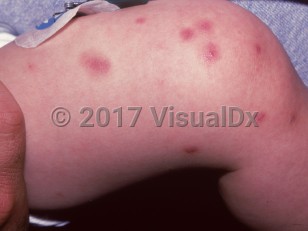No definitive cause of Takayasu arteritis has been identified, but it is thought to be an immunoglobulin G (IgG)-mediated autoimmune vasculitis, perhaps triggered by a cross-reacting infectious agent.
The disease typically presents in the second and third decade of life in females (10:1) of Asian descent. It is most prevalent in Japan, Southeast Asia, India, and Mexico but has been found worldwide and in both sexes. Incidence is approximately 2.5 per million.
The disease has 2 phases that may overlap: a prepulseless and a pulseless phase. In the first phase, a constellation of nonspecific constitutional symptoms and signs including malaise, weight loss, arthralgia, myalgia, and mild anemia may be seen. Some patients in the first phase will report mild fevers, at times with associated night sweats. In the second phase, the characteristic sequelae of large-vessel stenosis occur: upper extremity claudication, diminished brachial pulses, and/or differences in blood pressure between contralateral or ipsilateral extremities. Depending on the vessels involved, patients may develop light-headedness, dizziness or fainting, headaches or visual changes, chest pain or shortness of breath, and abdominal pain with diarrhea or blood in the stool.
The 2022 American College of Rheumatology (ACR) and European Alliance of Associations for Rheumatology (EULAR) classification criteria for Takayasu arteritis when a diagnosis of large-vessel vasculitis has been made:
A patient aged 60 years or younger with evidence of vasculitis on imaging; 5+ points from the following are needed for diagnosis:
Clinical criteria
- Female sex (+1)
- Angina (+2)
- Limb claudication (+2)
- Arterial bruit (+2)
- Reduced upper extremity pulse (+2)
- Reduced pulse or tenderness of a carotid artery (+2)
- Blood pressure difference between arms of ≥20 mm Hg (+1)
- Number of affected arterial territories (+1 to +3)
- Paired ("symmetric") artery involvement (+1)
- Abdominal aorta plus renal or mesenteric involvement (+3)
Diagnosis during the prepulseless phase is difficult because of the nonspecific nature of symptoms and laboratory abnormalities. Diagnosis is usually made during the pulseless phase when clinical criteria, as per above, are met. Angiography is essential to confirm the diagnosis.
Constitutional symptoms are typically intermittent, and vascular complications are generally progressive, but the prognosis is generally good, with 5-year survival reports of 90%-94%.
Cutaneous involvement can happen when inflammation of the cutaneous vasculature occurs and may present as erythema multiforme, erythema nodosum, erythema induratum, pyoderma gangrenosum, ulcerated subacute nodular lesions, papulonecrotic eruptions, and papular erythematous lesions of the hands.
Pediatric patient considerations: Takayasu arteritis in children rarely presents with pulselessness, claudication, or bruits. It is most frequently identified during evaluation for hypertension, heart failure, and neurologic symptoms.



